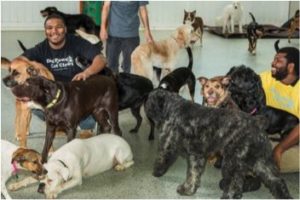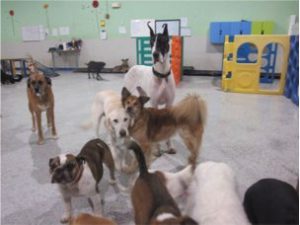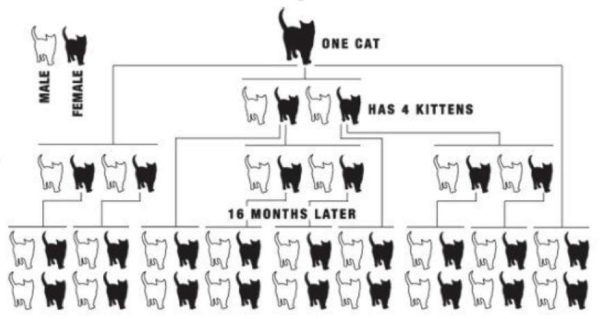
The following bi-weekly column is written and sponsored by Bark + Boarding, which provides a heart-centered and safe environment for your pets. Conveniently located at 5818-C Seminary Road in Bailey’s Crossroads, Bark + Boarding offers doggy daycare, boarding, grooming, walking and training services, plus in-home pet care.
by Chelsea Pennington
What your pet eats is vital to its health, so making the best choice regarding their food is important.
Since nearly every pet owner has an opinion on grain-free food and whether you should feed it to your pet, how can you know for sure what you should do for your furry friend? Bark + Boarding is here to help you sort through the information.
Is Grain-Free Best?
The primary argument supporters of grain-free food make is that the ancestors of modern-day animals were carnivores, and so it is more natural for our pets to eat meat.
Until the 1940s, dog and cat food was primarily moist and packaged in cans. As World War II began, the pet food industry switched to dry food, since it included less meat and could be packaged in bags rather than metal cans, which were also affected by rationing. While these dry pellets contained the necessary nutrition, they included more grain than found in previous products.
Grain-free foods also tend to have higher quality ingredients, such as real chicken, beef, salmon, eggs and other whole protein sources, which are generally better for your pet than the byproducts that are found in lower quality brands.
Because it is typically made of these healthier ingredients, grain-free food keeps animals fuller for a longer amount of time. Even though it is more expensive up front, the food should last longer and end up costing less in the long run.
A common belief is that switching to grain-free food can help alleviate food allergies. Although there is no solid scientific evidence to support this, it’s worth consulting your veterinarian about switching if you suspect your dog may have allergies caused by food.
What About Food Containing Grain?
While it’s true that the ancestors of dogs were carnivores, studies have shown that since dogs began living with humans, they have evolved genes for digesting grain and starches that wolves don’t have. This means that food with grain isn’t destroying your dog’s digestive system.
The grain-free movement in animal food didn’t develop until gluten-free and Paleo diets became popular among humans. Pet food marketers suspected that if humans considered certain elements as unhealthy in their own diets, they would believe they were unhealthy in their pets’ diets as well and began creating food to capitalize on this belief.
Low quality brands often rely too much on meat byproducts and starches such as potatoes to act as fillers in their foods. While this may not be detrimental to your pet’s health, it does mean you’re giving them food that in large part has no nutritional value and is simply meant to fill them up quickly.
However, if you buy high quality brands that are comprised of whole protein ingredients, these will likely be as healthy for your dog as the grain-free options. (more…)




